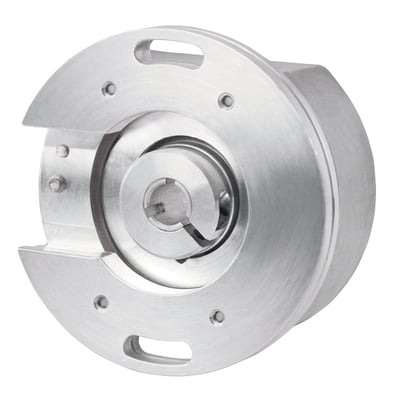The Solution
EPC Applications Engineers worked closely with Clarke to address not only what wasn’t working with the encoder on their unit, but to fine-tune what was working, and identify what could work better.
After considering the cause of Clarke’s encoder failures and all the application requirements, EPC’s engineers opted to design a customized version of the Model 121 Auto Aligning Modular Encoder. This rugged, all-metal, bearingless encoder was designed to virtually eliminate warping and deflection of the housing caused by hard shock and vibration. This design was the key to solving Clarke’s encoder problem.
With stable optical alignment and the advanced Opto-ASIC sensor technology of the Model 121, EPC’s engineers were able to work with Clarke to obtain more precise measurement of the atomizer’s speed. This enabled more accurate control of pesticide dilution during application, while ensuring reliable service and reduced operating expense due to field failures.
Addressing the need for hassle-free installation, the innovative and patented design of the Model 121 requires no calibration, gapping or special tools when mounting to the motor. The Model 121 is also able to withstand the 30,000 RPM speeds at which the Clarke unit operates. In addition, it can operate in temperatures up to 100° C and comes equipped with an IP50 dust seal kit.
All of these features guarantee that the Model 121 operates reliably over the full range of the pesticide machine’s operating conditions. Since switching to the Model 121, Clarke has not had an encoder failure on any of the upgraded machines.
Resources
Do you have a question about which encoder is right for your application? When you contact EPC, you talk to engineers and encoder experts for your toughest encoder questions. You’ll get answers that make sense for your application.
With our industry-leading three-year warranty, if something does go wrong, we’ve got you covered.
Contact EPC to find the right encoder for your application.


